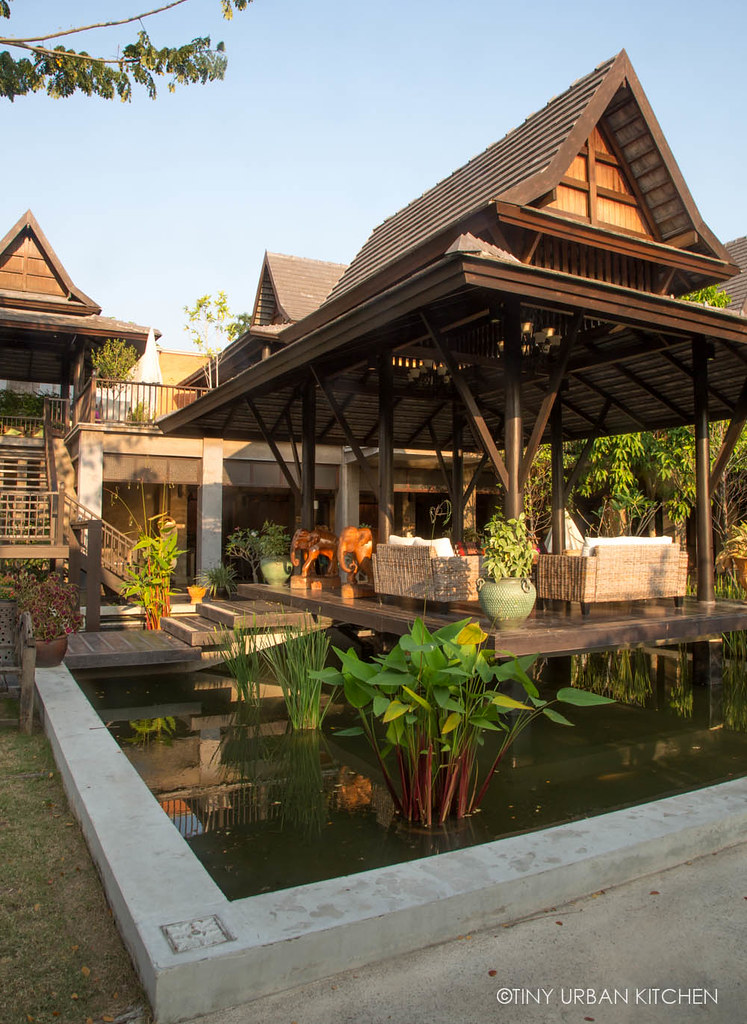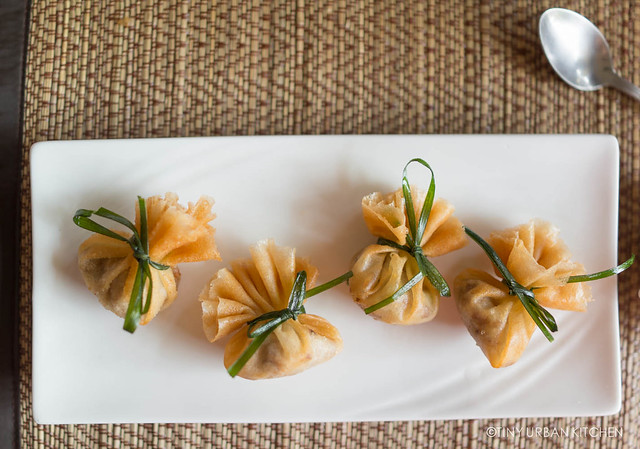
This is the twelfth (!) post in the Thailand! travel series of my eats in Bangkok. Other posts include Thip Samai, Best Pad Thai in Bangkok? and Raan Jay Fai, Best Drunken Noodle in Bangkok, Maeklong Railway Market, Floating Markets (Damnoen Saduak), Street Foods of Bangkok, Part I, and Street Foods of Bangkok, Part II, and Fun Fruits in Thailand plus posts about recipes from my cooking class at Somphong Thai Cooking School including Som Tam (Papaya Salad), Thai Panaeng Curry Chicken, and Bananas In Golden Syrup.
While Somphong Cooking School is a busy cooking school located smack in the middle of bustling Bangkok, Baipai Cooking School feels like an oasis set far away from the crazy crowded streets of the city.
It was day two of my cooking adventures. The previous day, I had spent 4 hours at the Somphong Cooking School in Bangkok learning how to make pad Thai, Panaeng curry, papaya salad, and bananas in golden syrup. I had learned so much about basic Thai spices from our fascinating market tour.
Just about an hour before this cooking class was to start, a van from the school came straight to my hotel to pick me up. It picked up one other couple (who turned out to be from Australia) before heading onto the highway towards the cooking school.
An hour later (traffic in Bangkok can be very bad sometimes!), we finally arrived.

The moment I stepped out of the van, I felt like I was at a resort or a spa. A sense of calm slowly came over me as I took a deep breath, enjoying the clean air out here.

Baipai is definitely a more "luxurious" cooking school. Upon arrival, they gave us each a key to a private locker where we could store our belongings. We were then given ice cold glasses of refreshing tea, a perfect antidote to the hot weather outside.

They handed out these traditional hats for all of us to wear since the sun was so strong outside.
"These are the types of hats they wear at the floating markets," said Nok, one of our instructors.

Instead of going to the local market, we took a brief walk around the little herb garden at BaiPai. There, Nok taught us the difference between galangal and ginger; kaffir lime and normal lime, cilantro and culantro, and many, many more.

Both of our instructors, Chef Phu on the left and Nok on the right, were great.

There were ten of us, and we all sat around this huge table where we all could watch Chef Phu as she demonstrated various cooking techniques. There was even a mirror above her workstation so we could watch (close up) what she was doing.

We learned the traditional way of making coconut cream. It's quite labor intensive! Before the days of machines, people manually carved out coconut shavings for the purpose of squeezing into coconut cream and milk.
We then got to try it for ourselves (see my hat picture above). It was hard work!
 And then, it was time to start cooking. I'll definitely write more detailed posts about each of these dishes (including recipes!), but for now, here's a little preview.
And then, it was time to start cooking. I'll definitely write more detailed posts about each of these dishes (including recipes!), but for now, here's a little preview.
Larb Gai, a Northern Thai Isaan style dish that consists of ground chicken tossed together with roasted rice powder, lime juice, fish sauce, and chilies.

Yes, we learned how to make Pad Thai (every cooking class seemed to include this one), but we also learned a neat new way of wrapping pad Thai with an egg. It reminds me of the ones they make at Thip Samai, arguably one of the best pad Thai places in Bangkok.

We made golden bags! I was surprised how easy it was.

And I discovered a new love for this dessert I'd never tried before - rubies in coconut milk. These are water chestnuts which have been lightly covered with a potato starch based coating. It is so tasty and utterly refreshing.

I really enjoyed my class at BaiPai Cooking School. The instructors were really nice, had excellent English, and really took good care of us. Compared to Somphong the location is a bit far out. However, it's nice that they pick you up at your hotel and take you back. It's just one less thing to worry about.
This class cost 2000 Baht, or about $60 USD. Still cheap by US standards, it costs about twice as much as Somphong. What do you get for that extra 1000 Baht? A more luxurious space, professionally printed recipe cards, and transportation to and from your hotel.

Between the two schools, I think the quality of education is comparable, and the dishes we made at both were absolutely fantastic. You really can't go wrong with either. For me, it was fascinating to compare the two different schools - everything from the differences in how they taught the same dish (Pad Thai) to the types of people that take classes at each school (Somphong had younger, more international crowd compared to the older, more American/Australian crowd at BaiPai).
Stay tuned for recipes and more step-by-step photos!
Photos of me courtesy of BaiPai Cooking School (I really liked how they took photos of us during our class and emailed us the files later on - definitely a nice touch).

No comments :
Post a Comment